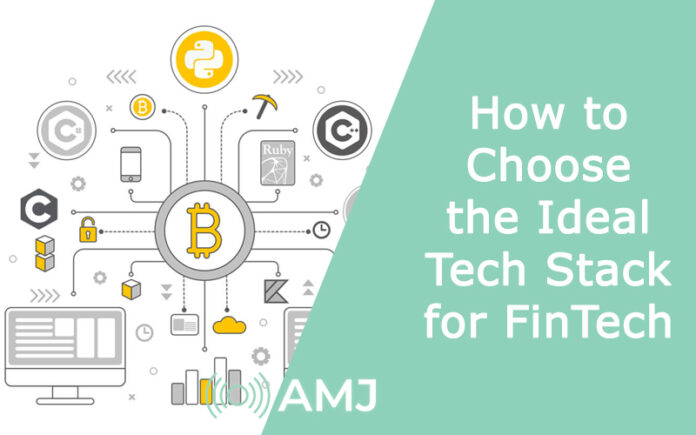FinTech development is booming because of its extensive features and ease of use. It has compressed traditional payment methods and expects to reach $936.51 billion by 2030, at a CAGR of 26.2% from 2022-2030.
However, to develop an efficient FinTech application or website you will require the best tech stack that matches the adaptability, compliance, stability, and friendly user experience for your FinTech product development.
It is proven that Ruby on Rails for FinTech is a reliable backend technology and frontends like ReactJs become a good match. Before diving into the ideal tech stack, let’s briefly understand tech stacks and factors to consider while choosing a superior technology stack for your FinTech project.
Contents
4 Factors to Consider While Choosing Tech-Stack
Determining the right tech stack for FinTech will help to acquire successful websites or applications. Here are the four factors to consider while deciding the technology stack for FinTech products.
1. Focus on scalability
The product is scalable if it does not require redesign to sustain performance and affect operation during or after workload increases. The scalability should be fast and easily modified to obtain new features. Moreover, there are two types of scalable: horizontal and vertical scaling.
The horizontal application can manage maximum requests, and vertical; the application can increase its capacity without affecting its overall performance. Therefore, you should choose the tech stack that has allowed you to focus on scalability.
2. Reliable security
Safety is crucial for users wanting to make digital transactions from FinTech web applications. Thus, you must provide a safer and more secure solution using the correct tech stack that eliminates the security risks.
For instance, you offer a strong password and PIN system for user safety. Also, it is essential because any distortion could lead to massive distrust among customers and businesses.
3. Time to market
Many business owners want to launch their products as early as possible; if you are one of them, choose a tech stack that provides quick solutions. Go for technologies that offer efficient functionalities and use cases. It will help you develop FinTech web applications faster and better.
Also, using less complicated technologies makes it easy for Ruby on Rails developers to develop and reduce their time spent on FinTech applications.
4. Determine cost
The last but crucial factor to consider is evaluating costs for the FinTech web application. It includes license, hosting, maintenance, and developer salaries. However, choose free, open-source software to keep your development budget low.
Also, be clear about which technologies and frameworks to use, so it will consume less cost and add the necessary value to the project.
Before launching your product in the market, it is necessary to determine which tech stack will be best for your FinTech web application. Here is a table where we have put together the technologies used by FinTech companies that turn out to be perfect to produce a successful output.
| Tech Stack for Fintech | Elements | Frameworks |
| Front-end development | HTML, CSS, Javascript | Angular.JS, React Native, and Vue.js. |
| Back-end development | Programming language, frameworks, databases, and server | Ruby on Rails, Laveral, and Python |
1. FinTech Front-end tech stack
- Front-end tech stacks like ReactJs have the required speed because virtual document object modeling (DOM) helps function faster.
- ReactJs help to provide excellent performance and stability for web applications. The JavaScript framework allows for making quick changes in real time.
- Also, ReactJs has less maintenance time because of its robust plugin library.
- The web application using ReactJs will look interactive, work, and engage with the customers.
2. Back-end for FinTech
- A back-end tech stack like Ruby on Rails is the best FinTech backend because you can add high-security features and secure critical data.
- The open-source framework helps to create web applications with robust passwords and usernames.
- Ruby on Rails comes with numerous inbuilt capabilities that help FinTech applications to deal with unprotected threats.
- Ruby on Rails helps in rapid development and minimum value product (MVP).
3. Databases
Another essential component of Fintech development is databases. As digital bank transactions increase, you will need a secure and rapid database that stores every piece of information—for instance, checking bank balances or large amounts of transactions. Hence, the database of FinTech must be reliable. MongoDB and MySQL are popular databases.
Additionally, the development includes APIs and servers to coordinate work with all elements of the FinTech product.
Final Verdict
Choosing the best and right tech stack for your FinTech development can be challenging. However, you can easily select the best one with a clear objective and expert advice on the FinTech stack. We have talked about how popular Ruby on Rails for FinTech applications here, but don’t merely depend on popular technologies used by FinTech startups; choose which will be suitable for your product. In addition, obtain a clear concept of different tech stacks for FinTech and hire an expert developer who can bring effective results.












![Index of Money Heist [Season 1, 2, 3 & 4 – All Episodes, Cast and Plot] Index of Money Heist](https://www.asiamediajournal.com/wp-content/uploads/2021/05/Index-of-Money-Heist-3-100x70.jpg)